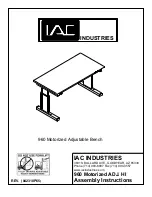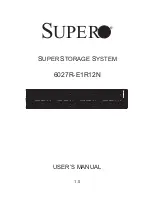
3. Using the Enterprise Management window, view the status storage subsystem.
Do any components in the storage subsystem indicate Needs Attention?
v
Yes – Go to step 4.
v
No – All components are Optimal. Go to step 8.
4. Open the Subsystem Management window, and display the Physical View for
the components in the storage subsystem.
5. View the status of the storage subsystem by selecting the
View Storage
Subsystem
button and expanding the Overall Component Information when
the Status window opens.
Using the Overall Component Information view, you can see the status of the
following components:
v
Interconnect-battery unit and battery packs in the component
v
SFPs
v
Power supply and fan units
v
Temperature sensors
The status for each component is either Optimal, Charging (applicable to
battery packs only), or Needs Attention.
6. Do any components have a Needs Attention status?
v
Yes – Go to step 7.
v
No – All components are Optimal. Go to step 8.
7. Select the Recovery Guru toolbar button. Perform the procedure in the
Recovery Guru to correct the problem. The Recovery Guru might direct you to
replace the failed component; if so, go to step 10, otherwise continue with step
8.
8. Check the LEDs on the storage subsystem to determine if a fault has occurred
in the storage subsystem.
For the definition of the LED statuses, see “Checking the LEDs.”
9. Are any Needs Attention LEDs indicating a fault condition?
v
Yes – Go to step 10.
v
No – You are finished with this procedure.
If you are still experiencing a problem with this storage subsystem, go to step
11.
10. Replace the failed component. For instructions on replacing the controllers,
power supply and fan units, interconnect-battery, battery pack, and SFP
modules, see Chapter 5, “Replacing components,” on page 167.
11. If the problem has not been fixed, contact your IBM service representative.
Print a storage subsystem profile, and save the storage subsystem support
data. The profile and support data are helpful when troubleshooting storage
subsystem problems. (For information about printing a storage subsystem
profile and saving the support data, refer to the Subsystem Management
window online help.)
Checking the LEDs
The LEDs display the status of the storage subsystem and components. Green
LEDs indicate a normal operating status; amber LEDs (Needs Attention) indicate a
possible failure; a blue LED indicates that is safe to remove a component.
It is important to check all the LEDs on the front and back of the storage subsystem
when you turn on the power. In addition to checking for faults, you can use the
Chapter 4. Operating the storage subsystem
143
















































